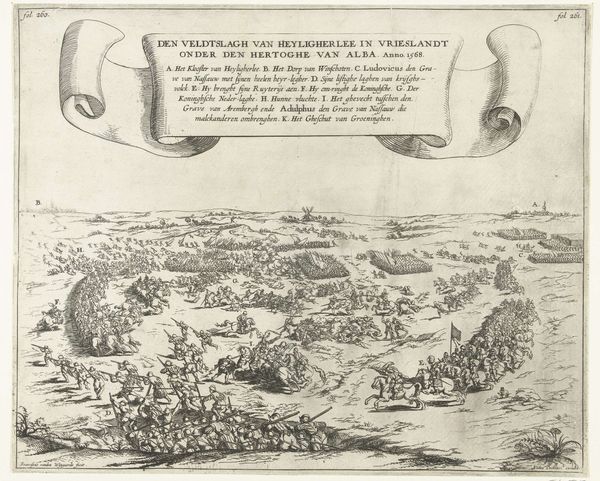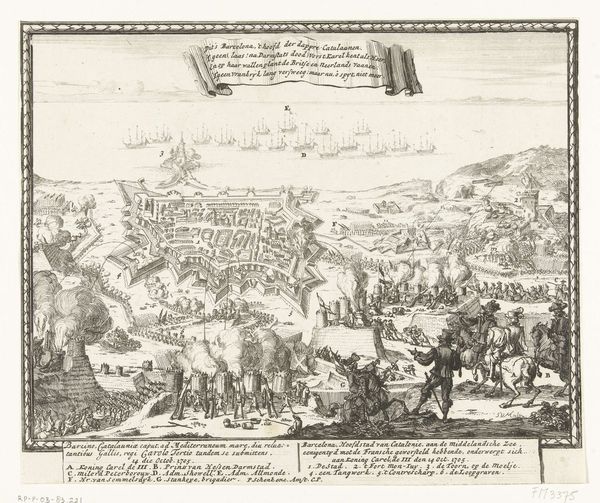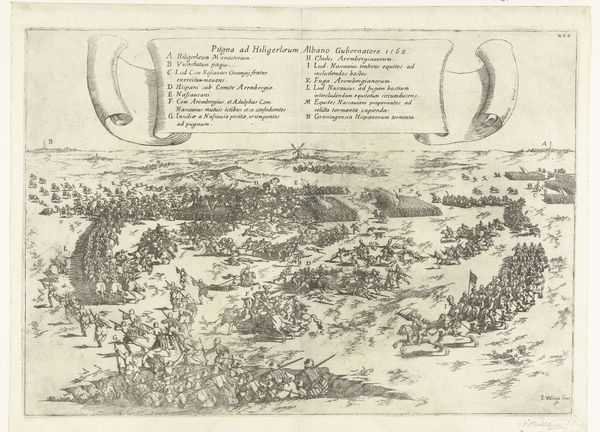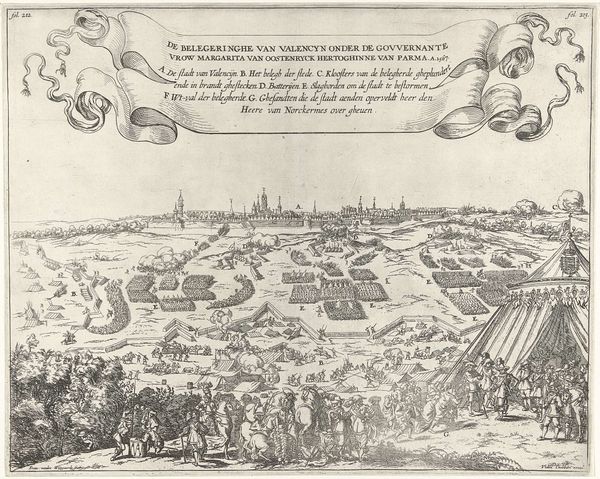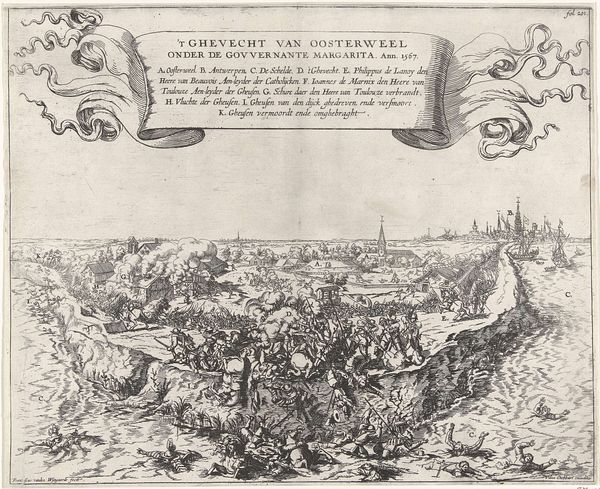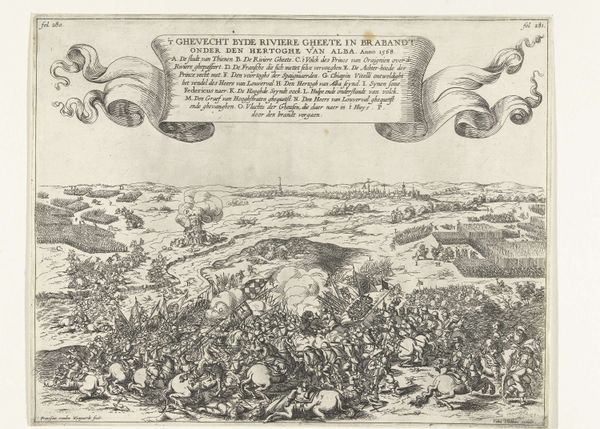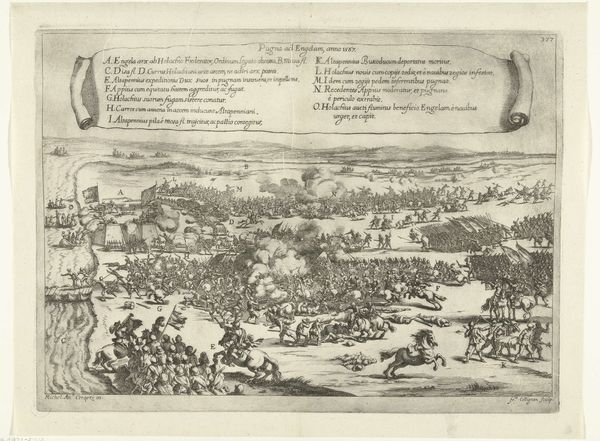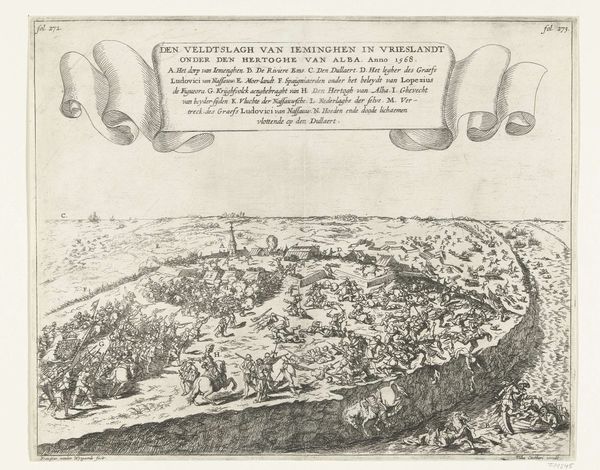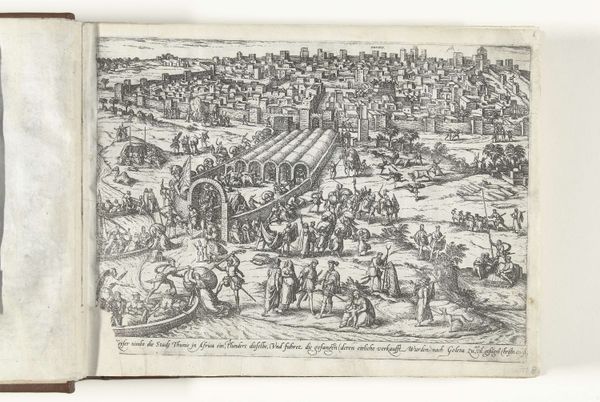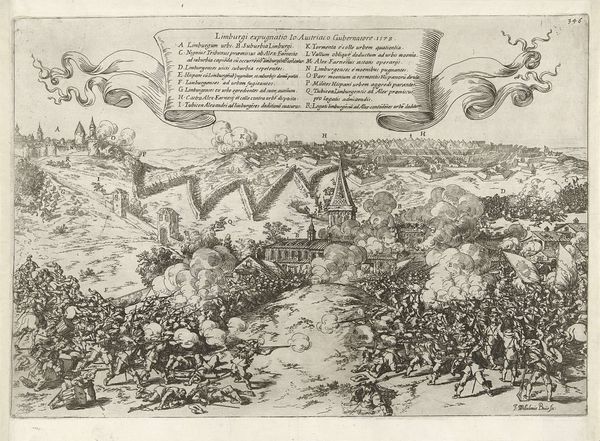
print, engraving
# print
#
old engraving style
#
landscape
#
history-painting
#
engraving
Dimensions: height 258 mm, width 321 mm
Copyright: Rijks Museum: Open Domain
This is Frans van den Wijngaerde’s etching, made around 1614-1679, portraying the Battle of Rijmenam in 1578. Here, the chaotic clash of soldiers is rendered with remarkable detail. The unfurled banners are particularly potent symbols. Throughout history, the banner has been more than mere cloth on a pole; it is a rallying point, an emblem of identity, a declaration of allegiance, or a promise of land. Consider, for instance, the Roman standards, the Aquila, which were fiercely protected, or the medieval banners of the crusades. The banner’s presence on the battlefield speaks volumes about collective identity and purpose. Flags provide a focal point for the troops, a visual representation of their cause, and are psychologically significant, embodying the hopes, fears, and loyalties of the soldiers. From ancient Rome to the fields of Flanders, the banner remains a constant, yet its meaning shifts with the tides of history. It taps into a deep, subconscious need for belonging, for something to believe in.
Comments
No comments
Be the first to comment and join the conversation on the ultimate creative platform.
